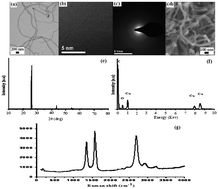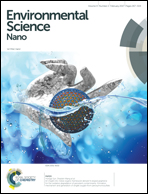A cost-effective method for recycling carbon and metals in plants: synthesizing nanomaterials
Abstract
This work focuses on the synthesis of nanomaterials, including multi-walled carbon nanotubes (MWCNTs), nanoparticles and nanocomposites, using the shoots of Sedum alfredii Hance and Brassica juncea L. (collected from a Cu–Zn mine area) as raw materials. The vascular bundles in S. alfredii and B. juncea turned into MWCNTs through a heating–cooling process after the metals in them were extracted with H2SO4 and formed sulfate which then reacted with OH− to synthesize metallic oxide nanoparticles. In addition, the nanoparticles were precipitated on the surface of the MWCNTs and formed MWCNT–metallic oxide nanocomposites. It was found that the structures of all MWCNTs from S. alfredii and B. juncea were middle-hollow. Their inner and outer diameters were 20 and 80 nm from S. alfredii and 60 and 80 nm from B. juncea, respectively. The ZnO nanoparticles, synthesized from S. alfredii, were nonuniform with a diameter around 30 nm and the Cu/ZnO nanoparticles, synthesized from B. juncea, corresponded to a Cu0.05Zn0.95O structure. Both ZnO and Cu0.05Zn0.95O nanoparticles, coated onto the surfaces of the MWCNTs, were nonuniform and agglomerated, with an outer diameter around 100 nm. There were no impurities existing in the synthesized nanomaterials. The reproducibility of the synthesized nanomaterials using both S. alfredii and B. juncea was high and stable. The yields of the synthesized nanomaterials using one plant of S. alfredii or B. juncea were 501.3 ± 364.2 mg and 637.5 ± 284.4 mg for the MWCNTs, 120.8 ± 59.3 mg for the ZnO nanoparticles and 145.1 ± 43.2 mg for the Cu0.05Zn0.95O nanoparticles, and 592.7 ± 164.7 mg for the MWCNT–ZnO nanocomposites and 711.5 ± 327.5 mg for the MWCNT–Cu0.05Zn0.95O nanocomposites, respectively. The cost for synthesis of 1 kg of MWCNTs was around US $120 using S. alfredii or B. juncea.


 Please wait while we load your content...
Please wait while we load your content...